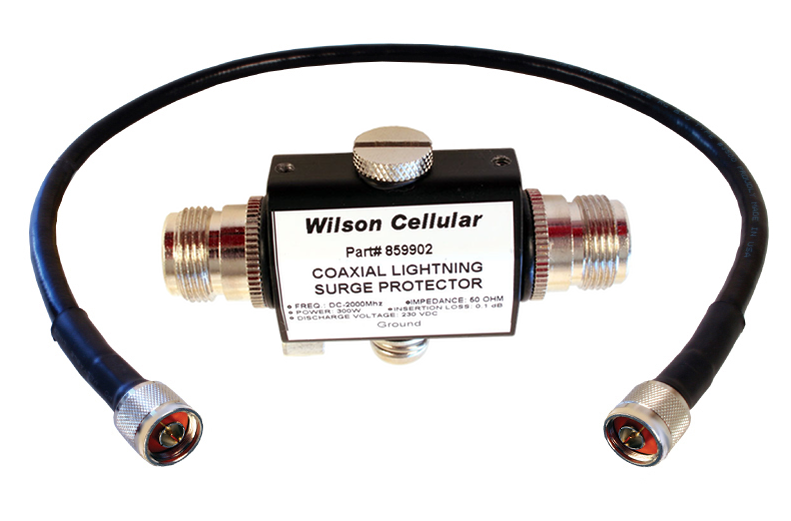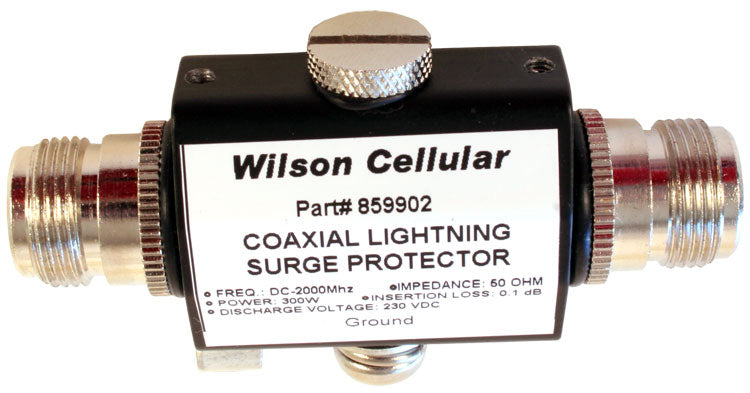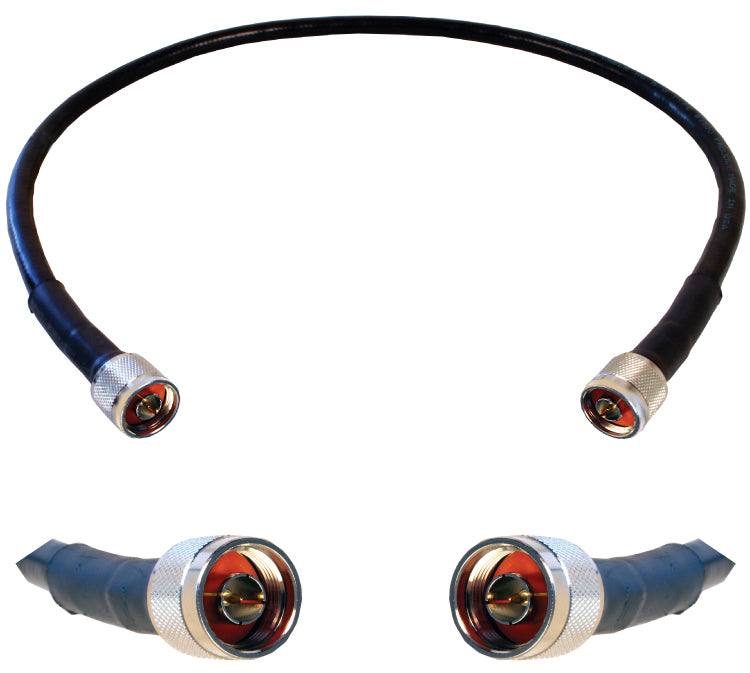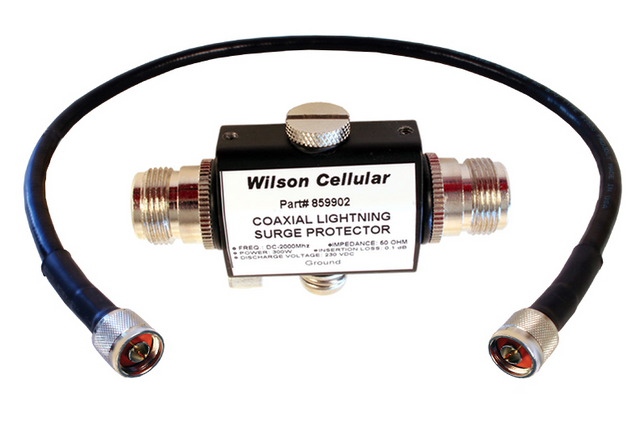Wilson 859902 Lightning Surge Protector with 2' Ultra Low Loss Coax Cable
90-Day Returns • Free Shipping $100+ • 2-Year Warranty
How to Choose the Right Antennas for Your Booster
Outside Antennas:
- Yagi Directional Antenna: This antenna is more powerful because it focuses on sending and receiving signals in one direction. It works best when there are no major obstacles blocking its path to the cell tower. It's not ideal for areas with large obstructions like hills or buildings.
- Omni Antenna: This antenna sends and receives in all directions, so it's better for hilly areas or if you need to support multiple carriers with towers in different directions. It doesn’t need to be aimed, but it also isn’t as strong as the Yagi antenna.
- High Gain LPDA Antenna: Perfect for areas with very weak signals, this antenna significantly boosts signal strength. It needs a clear line of sight to the cell tower and requires a sturdy mount because of its size.
Inside Antennas:
- Panel Antenna: Can be placed on walls or ceilings and directs the signal towards a specific area. This antenna is great for homes and tall ceilings in buildings.
- Standard Dome Antenna: Designed to mounted on the ceiling, this antenna spreads the signal evenly throughout the area. It's best suited for drop ceilings or spaces where cables can be run above the ceiling.
- Ultra-Thin Dome Antenna: This slim antenna also mounts to the ceiling, but is much is less noticeable. It's much stronger than a standard dome antenna, making it a great choice for places where both looks and signal strength are important.
Tips for Choosing:
- Choose Omni Antennas for general coverage with no aiming required.
- Choose Directional Antennas (Yagi or LPDA) when you can point directly at a cell tower and need stronger signal and more inside coverage.
- Interior Size Considerations: One antenna per 750-1,500 sq ft in homes, or 1,500-2,500 sq ft in open spaces like offices and warehouses.
Product Overview
Product Overview
Shield your cell phone signal booster system from potential damage due to lightning strikes with this effective lightning surge protector. Here’s what makes this device a valuable addition:
- Easy Connectivity: This surge protector connects seamlessly to one end of the cable attached to the external antenna, providing a direct line of defense against electrical surges.
- Included Jumper Cable: Comes with a 2 ft. jumper cable that effectively bridges the gap between the surge protector and the signal amplifier, ensuring full coverage protection.
- Replaceable Gas Discharge Element: Features a replaceable gas discharge element that autonomously breaks the connection during large power surges, safeguarding your equipment. This element can be replaced after activation to maintain protective performance.
- Grounding Requirement: To achieve optimal functionality and effective surge protection, this device must be properly grounded.
Note that while this surge protector offers significant protection against electrical surges, it does not come with a guarantee against all potential damages.
Specifications
Specifications
-
RF Connectors




